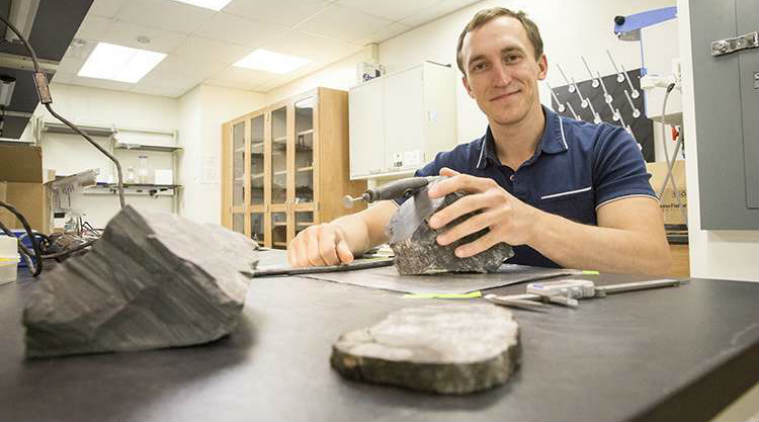Washington: Scientists have discovered fossil fragments of 260 million-year-old trees in Antarctica, a finding which shows that the frozen continent had a thriving forest before the first dinosaurs roamed the Earth. During Antarctica’s summer, scientists from University of Wisconsin – Milwaukee (UWM) in the US climbed the McIntyre Promontory’s frozen slopes in the Transantarctic Mountains.
They combed the mountain’s grey rocks for fossils from the continent’s green, forested past. “People have known about the fossils in Antarctica since the 1910-12 Robert Falcon Scott expedition,” said Erik Gulbranson, assistant professor at UWM.
“However, most of Antarctica is still unexplored. Sometimes, you might be the first person to ever climb a particular mountain,” said Gulbranson.
The Permian Period ended 251 million years ago in history’s greatest mass extinction, as the Earth rapidly shifted from icehouse to greenhouse conditions. More than 90 per cent of species on Earth disappeared, including the polar forests. Researchers believe that the trees in the Antarctic forests were an extremely hearty species and is trying to determine why they went extinct.
Many scientists now believe that a massive increase in atmospheric greenhouse gases, such as carbon dioxide and methane, caused the Permian-Triassic extinction. It is likely that over the course of 200,000 years, volcanic eruptions in Siberia released many tonnes of greenhouse gases into the atmosphere. John Isbell, professor at UWM, has previously studied Antarctica’s Permian glacial deposits to determine how the climate changed.
On this expedition, he used the rocks around the fossilised trees to determine how the fossils fit into Antarctica’s geologic history. “This forest is a glimpse of life before the extinction, which can help us understand what caused the event,” Gulbranson said. It can also give clues to how plants were different than today.
At the Permian Period’s end, Antarctica was warmer and more humid than it is today. It was part of Gondwana, the supercontinent spanning the Southern Hemisphere that also included present-day South America, Africa, India, Australia and the Arabian Peninsula.
There would have been a mixture of mosses, ferns and an extinct plant called Glossopteris, and it is likely that this forest stretched across the entirety of Gondwana. “This plant group must have been capable of surviving and thriving in a variety of environments,” Gulbranson said. However, not even these robust forests survived the high carbon dioxide concentrations of the mass extinction.
The resilient plants also must have survived through the polar extremes of perpetual light and total darkness. Even in a warmer past, the polar regions would have experienced months of darkness in winter and would have gone without sunset during the summer months.
PTI
260 million-year-old fossilised trees unveil Antarctica’s forested past before dinosaurs

